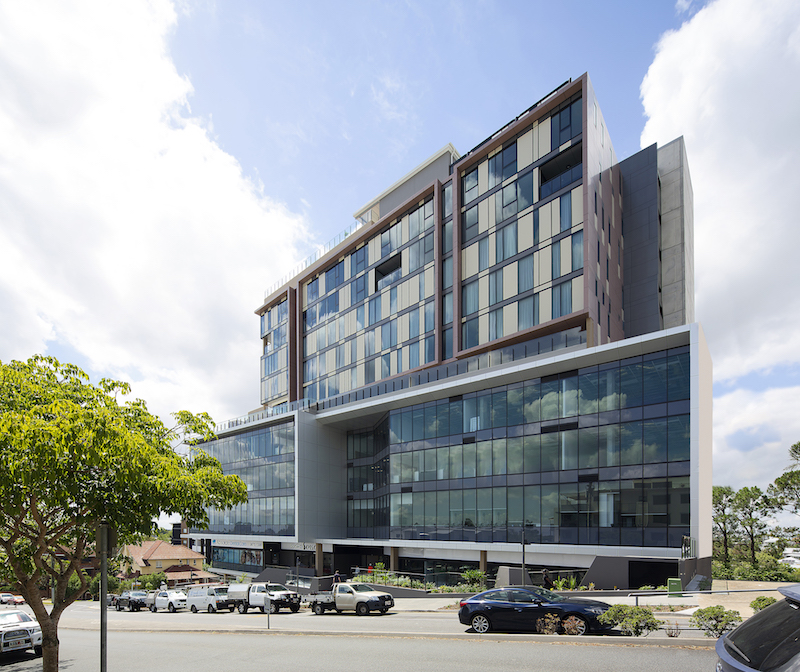Three Decades of Design with Soul
A pool in Central Australia provided the catalyst for the philosophy that lays at the heart of MODE which this year is marking 30 years in business.
Founder Rhonan O’Brien said he had made the decision to establish his own practice during a sabbatical in the early 1990s.
He was asked to design a large extension for the home of a friend and, once people heard he was working, that sabbatical “turned into a career”.
He began Rhonan O’Brien Architects and Designers in 1991, and MODE Design Corp was established in 2005, due to the growth of the practice.
Current principals Robert McCray and Peter Bertram became co-directors with O’Brien that year, and in 2010, Wayne Jackson and Trevor Barker became directors after a merger with Codd Stenders.
Today, MODE has more than 140 staff and 8 studios in Australia and New Zealand as well as a presence in Asia.
O’Brien said establishing his own practice had brought risks and rewards, with the latter outweighing the risk.

“It would have been far safer to stay with a firm, especially given that when I launched it was the time of ‘the recessions we had to have’,” he said.
A crucial part of MODE’s approach and ethos is its “four pillars” of environmental, economic, social sustainability and educational.
These aspects, at the core of MODE’s design approach, has led to it expanding its services and expertise beyond a traditional architectural practice.
Interior design, graphic design and wayfinding, landscape architecture, and master planning and urban design are part of MODE’s multidiscipline offerings in conjunction with its architectural services.
“This approach can be harder than a more traditional approach,” O’Brien said.
“Creating an awareness with clients that the design can provide solutions beyond their brief is not always easy, but ultimately is it more satisfying and successful for the client, the users and for us.”

This approach came, in part, thanks to a swimming pool in the Northern Territory.
“We had won the tender for the pool in the Walpiri community of Yuendumu, north-west of Alice Springs and part of our pitch had been consulting the community on the project,” O’Brien said.
“We asked what the biggest issue for the community was and the answer was truancy.
“At the time the rate was around 80 per cent truancy, so just 20 per cent of the school population was attending.
“This obviously was having a huge impact on the education and future of so many young people in the community, and it was also putting in danger the teacher numbers at the school—if just 20 per cent of the students were going to school, there was a real possibility four of the five teachers there would be taken away.”
O’Brien said the status of the pool was used to turn that situation around.
“The community decided that for young people to use the pool, they had to be going to school. No classes, no pool,” he said.
“In a short space of time after the pool was opened, that truancy rate inverted—80 per cent were going to school, 20 per cent weren’t.
“The community also had a major problem with ear and eye infections among young people, which was also causing learning difficulties.
“It was decided that before swimming in the pool, everyone had to shower, which increased hygiene and reduced the level of infections by half.”

O’Brien said while the role a building could play for its users above and beyond simple shelter had been a part of Mode’s thinking for some time, the Yuendumu Pool had been something of a catalyst.
“We could see the role a building could play in creating real positive change for a community,” he said.
“For all the social infrastructure projects we do, those who will use it are part of the process.
“But the same criteria can be applied across any building regardless of the sector.
“It is about creating an optimal end use, to use design to enhance people’s lives, and that’s exciting.”
O’Brien said establishing the triple bottom line ethos with clients including government was a major aim for MODE now and into the future.
“The benefits are across a wide range of aspects, but perhaps for government particularly, the savings in costs in a longer term are irrefutable,” he said.
“By creating built environments that support and nurture, there is a direct economic benefit in such areas as health and social services.”
Celebrating 30 years has given Rhonan time to reflect on MODE’s early beginnings and future path.
O’Brien says he is extremely proud of what’s been achieved and says success is a team effort.
“The people are what make any studio the success it is, and our group at MODE, across all our studios are no exception. Rob & Peter have been with me for more than 20 years, and Trevor for 11. We have a fantastic leadership team across Australia and New Zealand and we’re moving into our second generation of leaders, setting ourselves up for the next phase of growth, and we couldn’t be more excited.”
The Urban Developer is proud to partner with Mode Design Corp to deliver this article to you. In doing so, we can continue to publish our daily news, information, insights and opinion to you, our valued readers.













